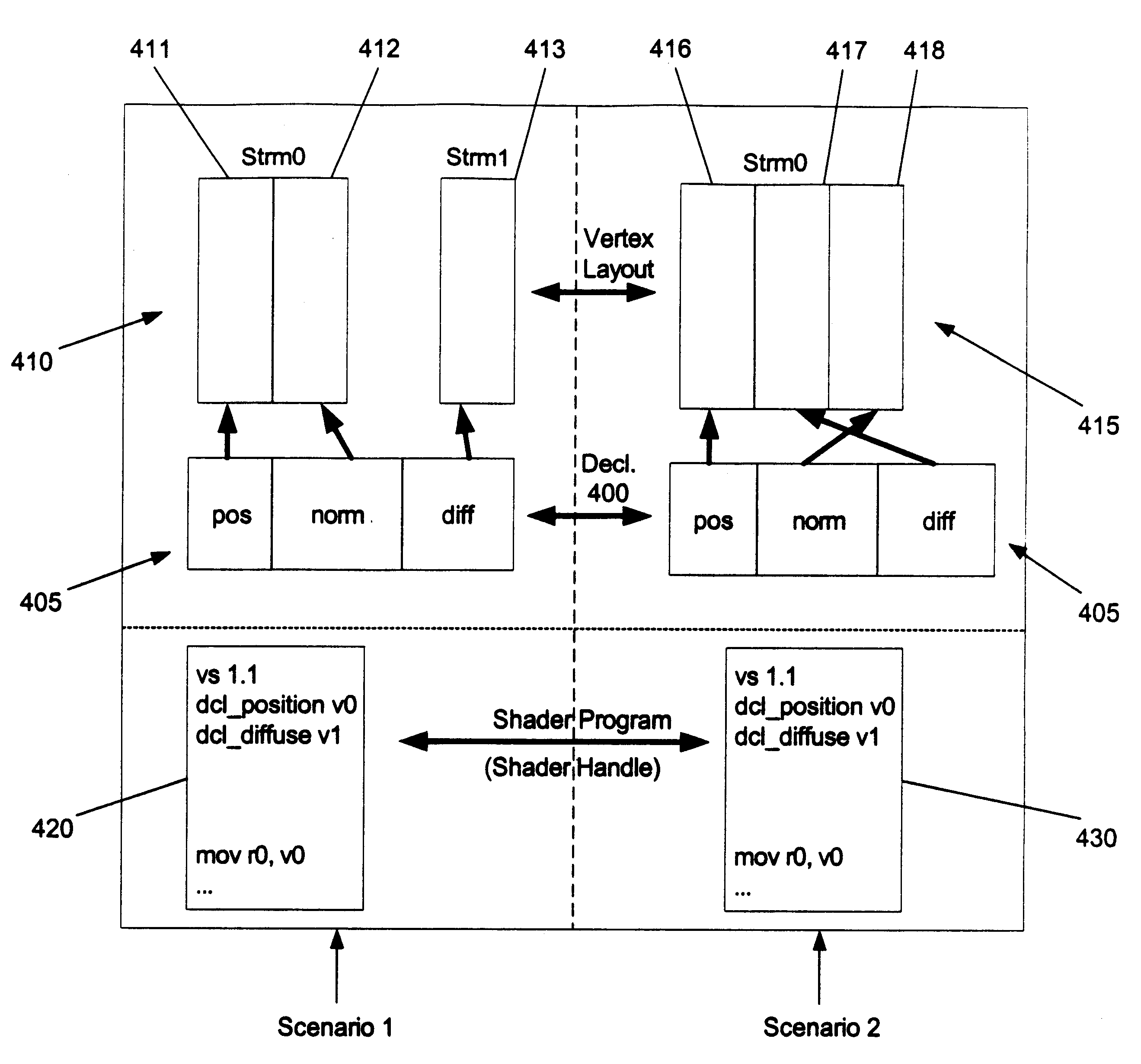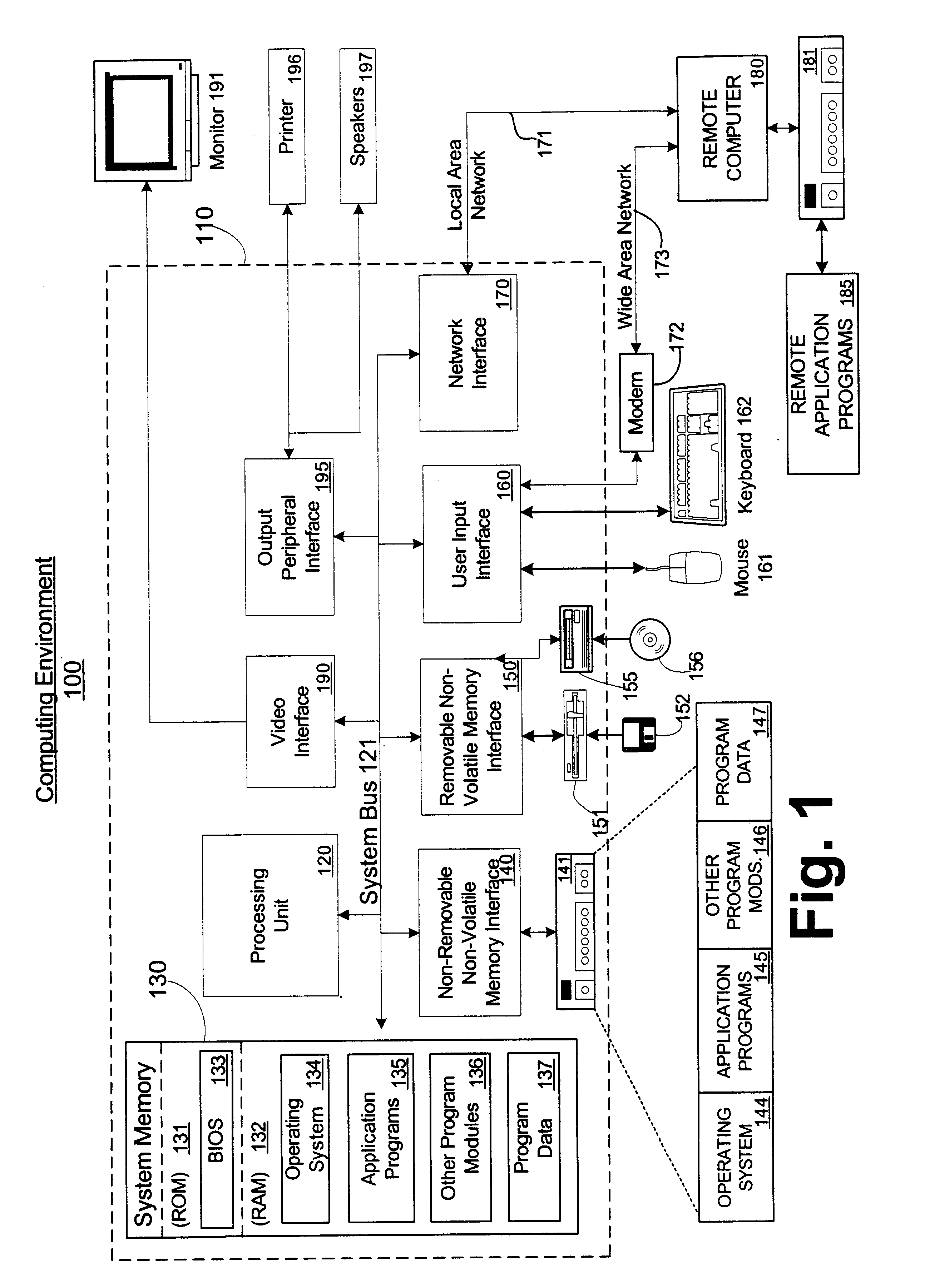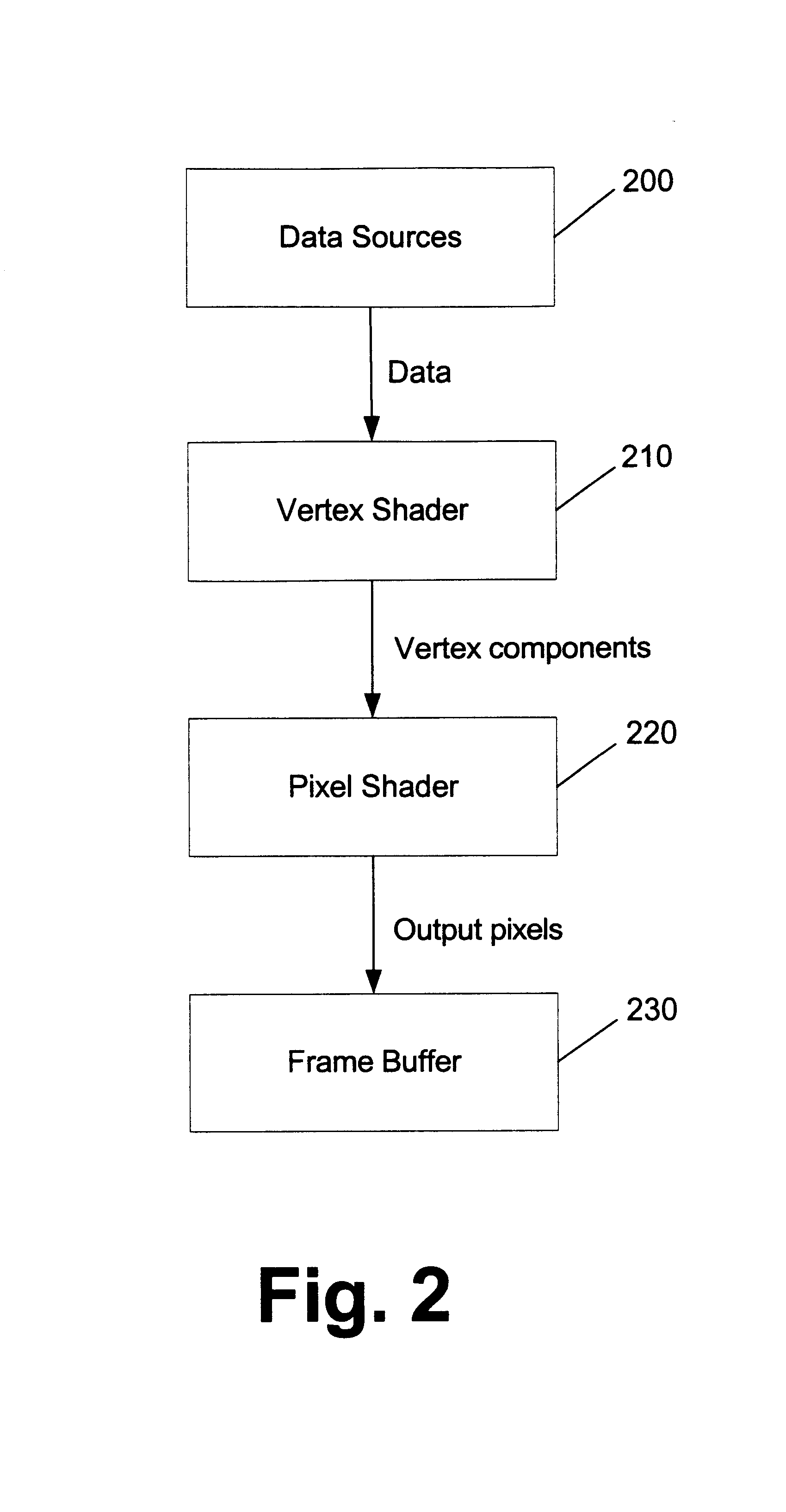Usage semantics
a semantic and usage technology, applied in the field of computer graphics, can solve the problems of inflexibleness, inability to modify the shader code, and inability to read inputs in a fixed manner, and achieve the effect of reducing the number of shaders
- Summary
- Abstract
- Description
- Claims
- Application Information
AI Technical Summary
Benefits of technology
Problems solved by technology
Method used
Image
Examples
Embodiment Construction
Overview
The present invention is directed to attaching a semantic to the components in a buffer to provide linking. A semantic is a connection used to provide meaning to outputs of an application such as a shader. For example, a vertex shader and a pixel shader can be linked up by matching the semantics, as described herein.
Exemplary Computing Environment
FIG. 1 illustrates an example of a suitable computing system environment 100 in which the invention may be implemented. The computing system environment 100 is only one example of a suitable computing environment and is not intended to suggest any limitation as to the scope of use or functionality of the invention. Neither should the computing environment 100 be interpreted as having any dependency or requirement relating to any one or combination of components illustrated in the exemplary operating environment 100.
The invention is operational with numerous other general purpose or special purpose computing system environments or co...
PUM
 Login to View More
Login to View More Abstract
Description
Claims
Application Information
 Login to View More
Login to View More - R&D
- Intellectual Property
- Life Sciences
- Materials
- Tech Scout
- Unparalleled Data Quality
- Higher Quality Content
- 60% Fewer Hallucinations
Browse by: Latest US Patents, China's latest patents, Technical Efficacy Thesaurus, Application Domain, Technology Topic, Popular Technical Reports.
© 2025 PatSnap. All rights reserved.Legal|Privacy policy|Modern Slavery Act Transparency Statement|Sitemap|About US| Contact US: help@patsnap.com



